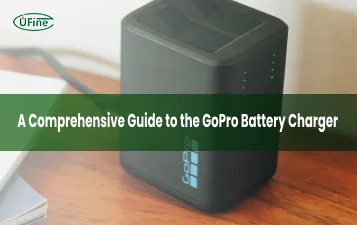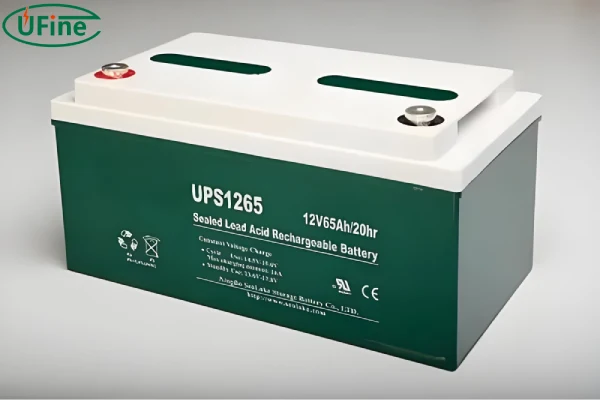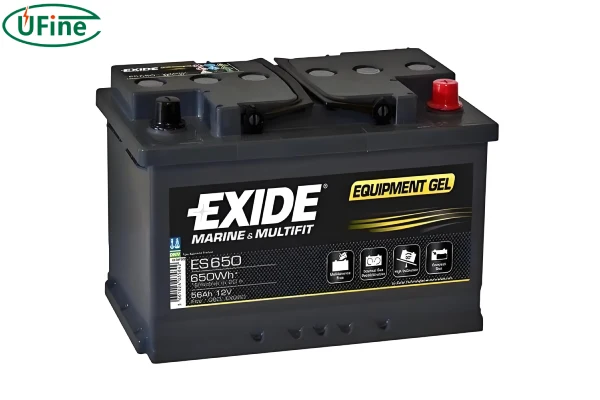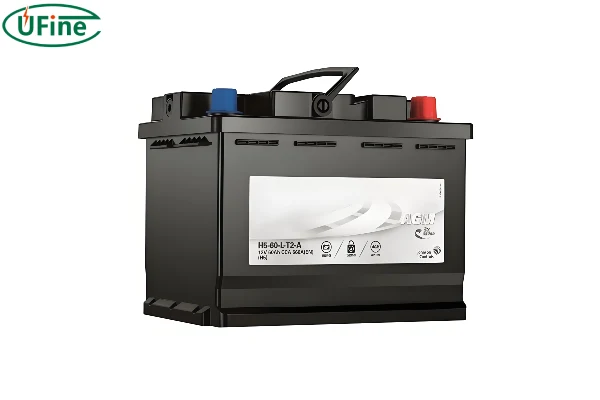Batteries are now a vital part of our lives. These power everything from cars to motorbikes, smartphones to home appliances, and even homes with solar setups. You may have seen many battery types, including Lead-acid, Gel, and AGM batteries. Have you known the differences and similarities of a lead-acid battery, gel battery, and AGM battery? This article will elaborate one by one about a lead acid battery, a gel battery, and an AGM battery. We will also compare these three battery types.
Part 1. What is the lead-acid Battery?
The lead-acid battery is the most common and oldest rechargeable battery, also known as a flooded or wet cell battery. The battery uses lead plates. Each plate gives around 2 volts, and six plates make a 12v battery. These are submerged in sulfuric acid electrolytes to generate electricity. The lead-acid battery uses lead as an anode and lead dioxide as a cathode with an acid electrolyte. However, in the charging process, the reaction of each electrode reverses. The anode becomes a cathode, and the cathode becomes anode.
Moreover, the lead-acid battery does not have a sealed design and recombines the gasses to liquid internally. So, the internal gasses are vented directly into the environment. A Lead-acid battery also needs a frequent fluid top-up; otherwise, the plates will be corroded and damaged.
Part 2. What is the Gel Battery?
A Gel battery has a sealed design similar to an AGM battery. A Gel battery uses silica gel as an electrolyte in the form of a jelly-like substance. It is a maintenance-free battery and better than a lead-acid battery. However, the gel battery does not support fast charging and discharging situations. Therefore, it is necessary to take extra care to avoid overcharging the battery. Because gel creates extra pockets, and the plate can corrode. Moreover, the battery can explode or lead to premature failure.
Part 3. What is the AGM Battery?
Absorbed Glass Matt or AGM battery is an advanced form of lead-acid battery. It uses a fiberglass separator between each cell’s positive and negative parts. This fiberglass separator lowers the internal resistance to increase the battery’s efficiency. The AGM battery has a sealed design, making it a spill-proof, maintenance-free one. It recombines the gasses internally and changes them back into liquid. Each battery component, including the anode, cathode, electrolyte, and separator, is combined tightly, making the AGM battery impact-resistant and protecting against vibrations. Likewise, lead-acid or gel batteries, the AGM battery also has 2 volt calls connected in series for 12 volt or 24 volt battery.
Part 4. Lead-acid battery vs. Gel battery vs. AGM battery
Let’s take a closer look and compare these three known battery types. This comparison will help to find out the similarities and differences between each battery and the other.
1. Electrolyte Type
All three batteries use different electrolyte types in their batteries. A lead-acid battery has liquid electrolytes of sulfuric acid. So when the battery charges, sulfuric acid reacts with lead and produces lead sulfate. However, a lead-acid battery needs time-to-time maintenance, like top-up distilled water.
A gel battery uses silica gel as an electrolyte to turn into sulfuric acid. It is a jelly-based substance that does not require maintenance. However, a gel battery can explode or cause failure due to the gel if not charged properly.
On the other hand, an AGM battery uses sulfuric acid electrolytes, which are well absorbed in a fiberglass mat separator. It properly saturates and maintains adequate electrolytes between positive and negative battery plates.
2. Battery Design
Both AGM and Gel batteries are spill-proof and sealed in design. You will not have to worry about checking the electrolyte level and cleaning the surrounding areas of the battery. On the other hand, a lead-acid battery does not have a sealed design. It requires timely maintenance and cleaning. Moreover, the electrolytes can spill off the lead-acid battery caps if tilted or rolled over. So gel and AGM batteries have the upper hand in battery design.
3. Cycle Life
The life span of a battery always depends on many factors, including usage habits, temperature, charging technique, and many more. A lead-acid battery usually has around 250 to 350 life cycles if maintained properly. On the other hand, AGM batteries can perform 2x the lead-acid battery. You can expect around 600 cycle life from an AGM battery or five to six years of usability. A gel battery has more life cycles than both batteries, around 600 cycles at 80%, and can get 1000 at 30% depth of discharge. So, a gel battery has the slight upper hand in having a longer lifespan than AGM and lead-acid batteries.
4. Charging Efficiency
From a charing point of view, the efficiency of all three battery types is almost the same. Lead-acid, AGM, and gel batteries can be charged between 10 and 15 Amps when the battery has a 100 ampere-hour capacity. So, you can charge these batteries at 10 to 15% of the battery capacity. However, it is compulsory to charge the battery according to the manual instructions of each battery with a suitable charge.
5. Power Performance
There is no doubt that a gel battery performs better when you compare it with AGM or Lead-acid batteries. However, a gel battery is not ideal when we need instant power, like cranking the engine or a fast charge rate. In such conditions, the AGM battery performs better. However, you can not neglect a lead-acid battery when you need more Cold Cranking Ampere CCA. Overall, AGM batteries are widely accepted in most appliances and perform very well.
6. Battery Cost
A lead-acid battery has the most affordable price range. Being an old technology with a few battery features makes a lead-acid battery a budget choice. It can be 2x lower than an AGM battery. On the contrary, a Gel battery is expensive because of its long lifespan, maintenance-free, and robust build. However, the exact price can vary from one brand to another. Often, one brand sells a lead-acid battery at the same price as the other brand sells a gel battery.
7. Battery Weight
Generally, a lead-acid battery is heavier because of thick lead plates and liquid electrolytes. A good quality lead-acid battery uses a thick lead plate to run for a long time. However, sometimes, the manufacturer makes thin plates that are cost-effective and have a lower lifespan. So, the average weight of a 100Ah battery is between 28 to 35 kg, depending on the manufacturer and model.
An AGM battery is lighter as it does not have many liquid electrolytes. Therefore, the weight can be around 25 to 30 kg. The gel battery stands between both batteries, weighing around 28 to 32 kg in 100Ah capacity.
Comparison Table of Lead-acid Battery vs AGM battery vs. Gel Battery
| Feature | Lead-Acid | AGM | Gel |
|---|---|---|---|
| Electrolyte Type | Liquid sulfuric acid | Sulfuric acid absorbed in fiberglass mat | Silica gel-based sulfuric acid |
| Maintenance | Requires periodic water top-ups | Maintenance-free, sealed design | Maintenance-free, sealed design |
| Spill Risk | Can spill if tilted/overturned | Spill-proof, sealed design | Spill-proof, sealed design |
| Cycle Life | 250-350 cycles | ~600 cycles | 600 cycles at 80% DoD, 1000 cycles at 30% DoD |
| Charging Efficiency | 10-15% of capacity | 10-15% of capacity | 10-15% of capacity |
| Power Performance | Good CCA, but not as high as AGM | Excellent CCA and power output | Slightly lower power output than AGM |
| Cost | Most affordable | More expensive than lead-acid | Most expensive |
| Weight | Heaviest, 28-35 kg for 100Ah | Lighter, 25-30 kg for 100Ah | Mid-range, 28-32 kg for 100Ah |
Part 5. Which battery should I choose?
Every battery has advantages and disadvantages, so choosing the right one depends on your specific needs and application.
- Automotive: AGM batteries are excellent for high-performance vehicles due to their high power density and vibration resistance. However, a Lead-acid battery is a budget-friendly option if you can maintain it properly.
- Gold Cart Wheelchair: you should go for a Gel battery because a wheelchair, motorbike, and golf cart do not require high instant power but need long run.
- Marine and RV: A Gel battery is ideal for deep-cycle applications where long-term storage and minimal maintenance are important.
- Backup Power: AGM batteries are well-suited for UPS systems because of their high discharge rates and reliability.
- General Use: Lead-acid battery is cost-effective for general applications where maintenance is not a significant issue.
Part 6. FAQs
-
Do gel and AGM batteries require special chargers?
Every battery should be charged according to the manufacturer’s guidelines. Gel and AGM batteries may require specialized suitable chargers or charging profiles to prevent overcharging and damage to the battery. -
Are gel and AGM batteries more expensive than a lead-acid battery?
Yes, gel and AGM batteries are more expensive than lead-acid batteries due to their advanced design and manufacturing process. Both batteries are spill-proof, maintenance-free, and long-lasting compared to lead-acid batteries. -
Can I use a lead-acid battery instead of a gel or AGM battery?
It is generally not recommended to use a lead-acid battery instead of a gel or AGM battery, as the charging system and other factors may not be compatible. However, with the help of a professional technician, you can customize the system to use gel or AGM battery. -
Is lead-acid battery safe?
A lead-acid battery is a safe option. You need to take care of proper charging, avoiding short circuits, and battery maintenance. -
What is the main disadvantage of a Gel battery?
A gel battery is not made to deliver instant high power. It should be charged with great care because overcharging may result in battery failure or explosion. Moreover, the battery should not be used in a heated environment as it can lose its efficiency and lifespan.
Related Tags:
More Articles

GoPro Battery Charger Guide: Top Picks & Pro Charging Tips
Explore the best GoPro chargers, compare third-party options, and learn how to charge smarter for longer battery life.
GoPro Battery Life Comparison: How Long Does a GoPro Battery Last?
Find out how GoPro battery life varies by model and get practical advice to maximize runtime for every adventure.
What Battery Powers Your GoPro?
Learn all about GoPro batteries - compatibility, runtime, charging tips, and how to extend battery life for longer shoots.
What Is a Disk Battery? A Simple Guide for Non-Tech Users
A disk battery is a small, round cell used in watches, remotes, and other electronic devices. It delivers steady power for compact, low-drain devices.
What Battery Powers a Space Heater?
Discover the type of battery that powers space heaters and learn how to choose the right one for efficient heating in your home or office.






